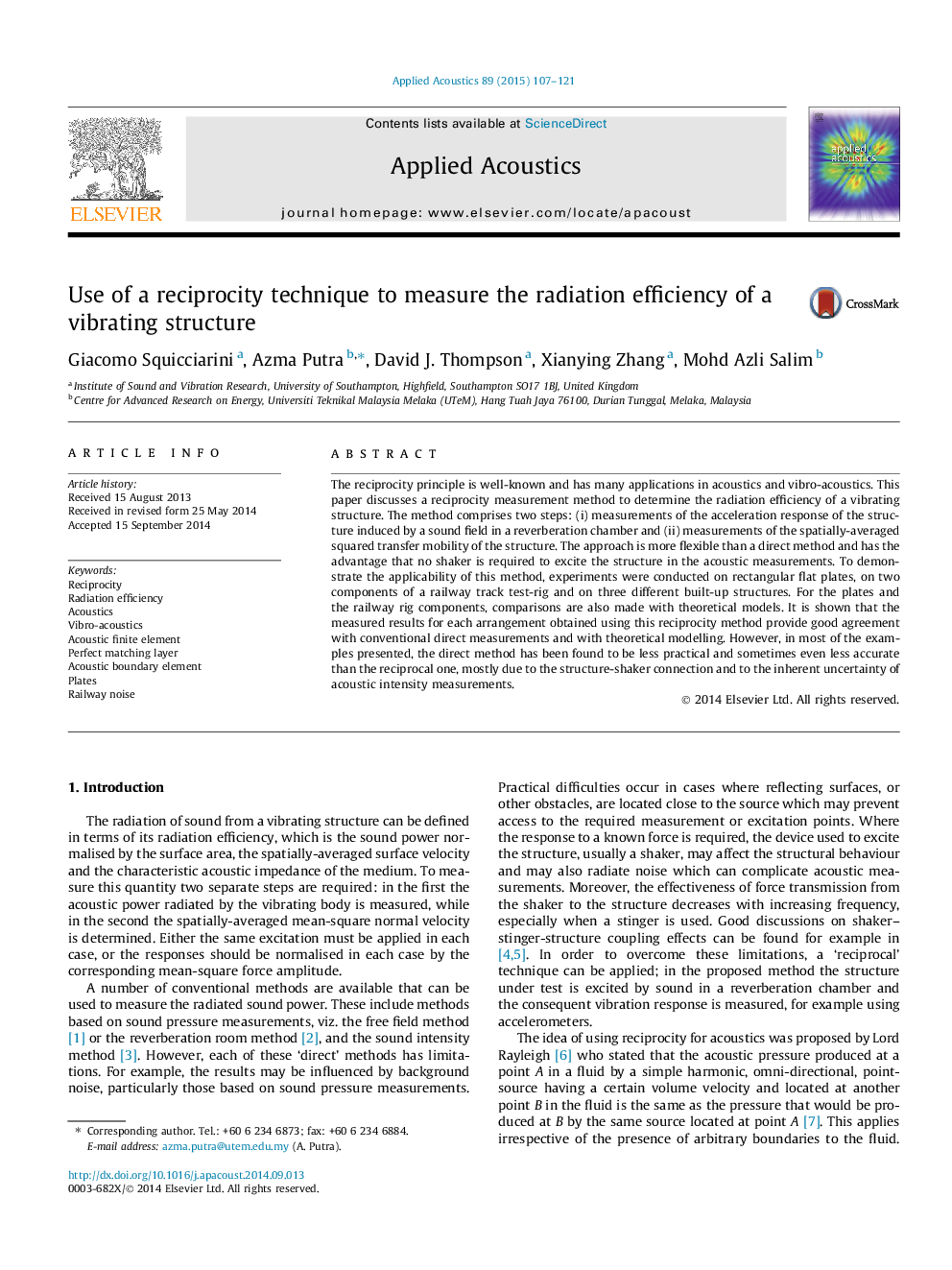| Article ID | Journal | Published Year | Pages | File Type |
|---|---|---|---|---|
| 7152700 | Applied Acoustics | 2015 | 15 Pages |
Abstract
The reciprocity principle is well-known and has many applications in acoustics and vibro-acoustics. This paper discusses a reciprocity measurement method to determine the radiation efficiency of a vibrating structure. The method comprises two steps: (i) measurements of the acceleration response of the structure induced by a sound field in a reverberation chamber and (ii) measurements of the spatially-averaged squared transfer mobility of the structure. The approach is more flexible than a direct method and has the advantage that no shaker is required to excite the structure in the acoustic measurements. To demonstrate the applicability of this method, experiments were conducted on rectangular flat plates, on two components of a railway track test-rig and on three different built-up structures. For the plates and the railway rig components, comparisons are also made with theoretical models. It is shown that the measured results for each arrangement obtained using this reciprocity method provide good agreement with conventional direct measurements and with theoretical modelling. However, in most of the examples presented, the direct method has been found to be less practical and sometimes even less accurate than the reciprocal one, mostly due to the structure-shaker connection and to the inherent uncertainty of acoustic intensity measurements.
Related Topics
Physical Sciences and Engineering
Engineering
Mechanical Engineering
Authors
Giacomo Squicciarini, Azma Putra, David J. Thompson, Xianying Zhang, Mohd Azli Salim,
